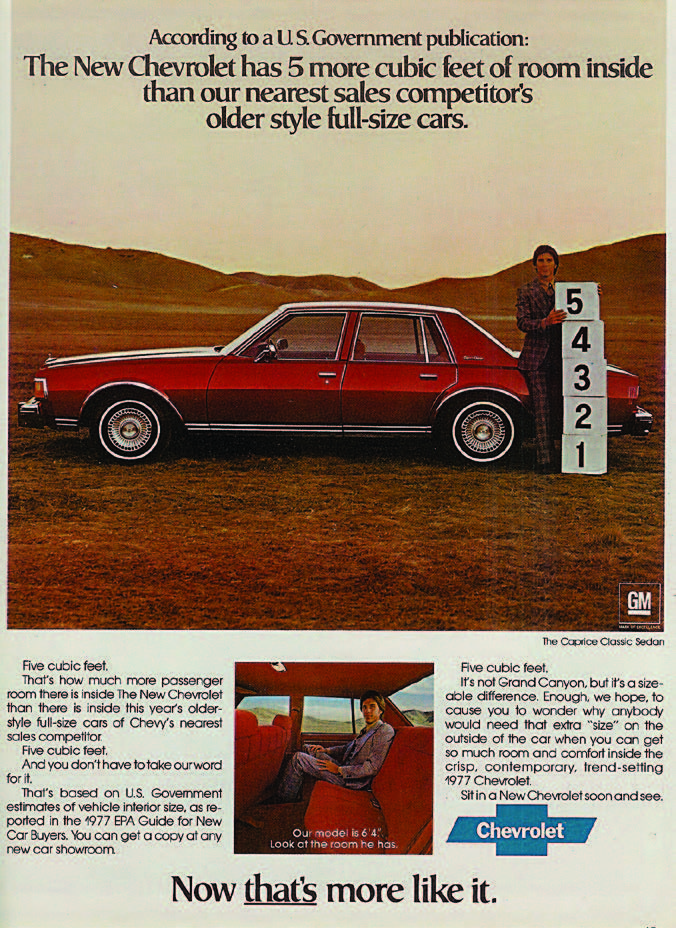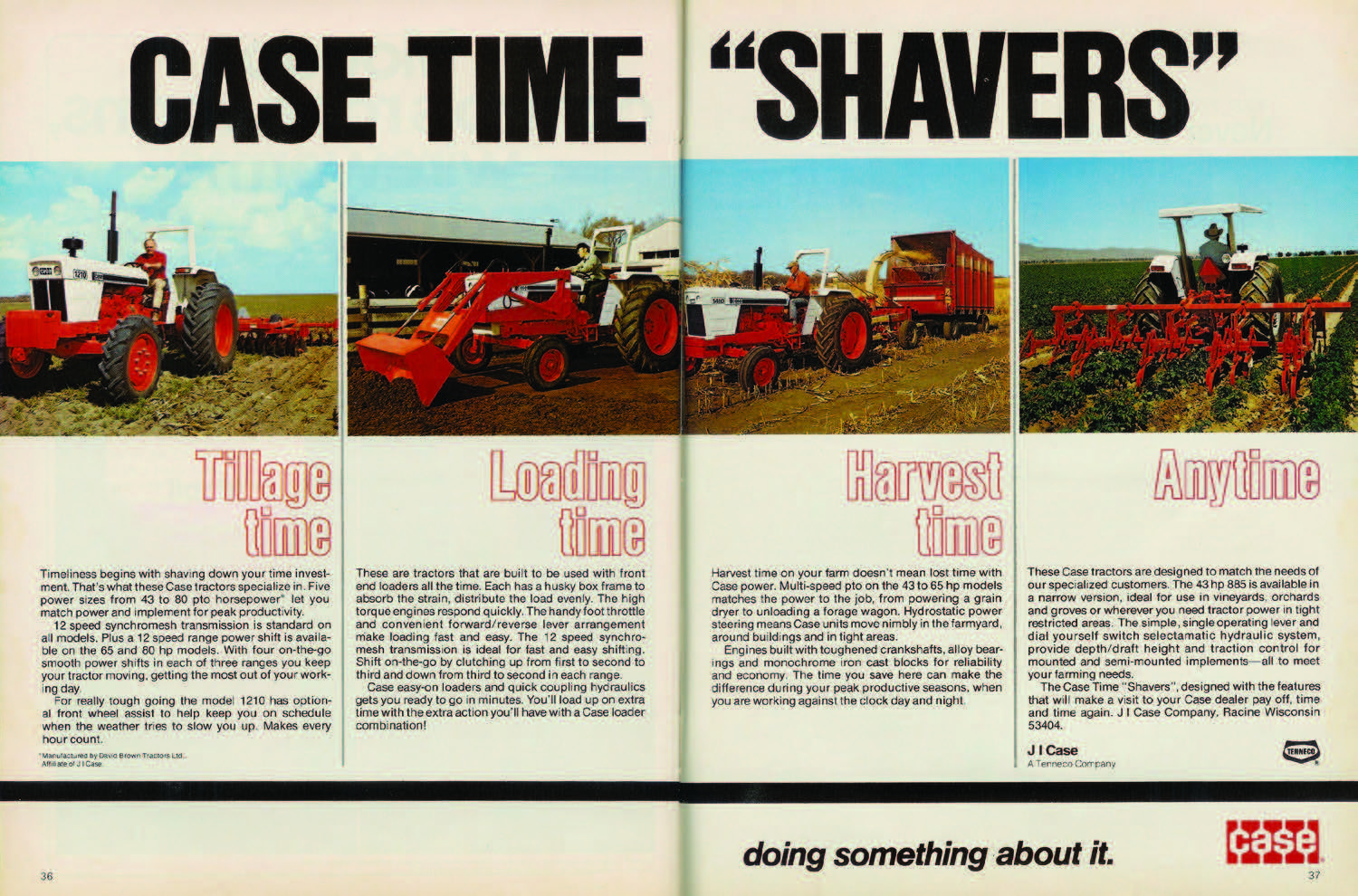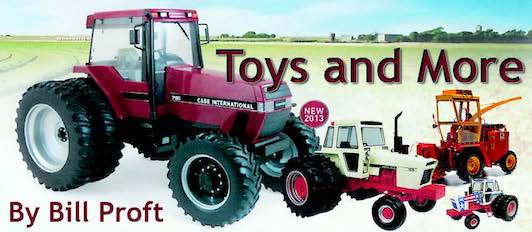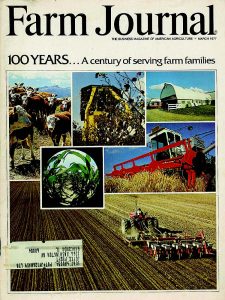
I have way too much “stuff” around the house and I am reminded of it regularly. Recently I was going through a box of old papers that had been stored away, in an attempt to get rid of some of it. Much to my surprise, there were a few old issues of Farm Journal magazine buried in the box. I remember that my mom subscribed to that magazine for a time during the 1970s, but had no clue that some of the issues were still lying around. In- terestingly enough, one of the issues was dated March 1977 and was the 100th anniversary issue. Perhaps that was the reason why it was still stored away—probably not, but it was here nonetheless. Anyway, I thought that I would share some of the advertising content from that magazine since it was from more than 40 years ago and it fits directly in the time frame of Classic Farm and Tractor.
Photo 1 shows the front cover of the magazine. Note the reference to 100 years followed with “A century of serving farm families.” I did a little bit of research online and found that Farm Journal is still being published after all these years. On their website, they refer to having first published a magazine in March of 1877, which is amazing to me. Just think of all the changes in agriculture since that time.
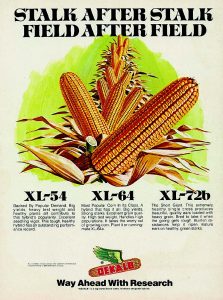
On the front cover are various farm scenes (clockwise from the upper left): A herd of grazing cattle, a cotton picker at work, a milk truck picking up milk at a dairy farm, a Gleaner combine at work, a farmer planting crops and a close-up view of a corn field. The photographs cover many aspects of farm life throughout the year.
On the back cover (Photo 2) is a full page ad for DEKALB seed corn. This brand has been around for many years and I especially like the painted picture of the corn cobs in the center. The ad is essentially saying that you get great yields all the time with this brand of seed corn. Obviously, Mother Nature has a huge influence as well. Three varieties of their seed are listed, along with a quick description of each. The DEKALB trademark is boldly placed along the bottom, followed by a tag line of “Way Ahead With Research.” All in all, I think this is a very eye-catching advertisement.
Inside the magazine, there are articles covering much of what farm- ers have discussed for years including the weather, commodity prices, more efficient equipment and better ways of farming in general. There is also a several page article on what the future looked like for agriculture back in 1977. Since Farm Journal had covered the business for 100 years, the editors were taking an educated guess on the
next 100 years.
So let’s take a look at some of the other ads in the magazine. Photo 3 is from inside the front cover. It is another full page ad, which features Allis-Chalmers garden tractors. The top picture shows an entire family gathered around what appears to be a grandfather who has just purchased a new Allis-Chalmers tractor. Below are three pictures showing some of the product line-up, including the 16 horsepower 716 with mower deck,
the 12 horsepower 712 with rear tiller and the eight horsepower 808GT with mower deck. At this time, Allis- Chalmers was using the tag line, “The Beautiful Difference.” I can’t figure out how that plays into their products but they have it in full display near the center of the ad in very 1970s-style letters. The text in the lower portion of the page lists all of the garden tractor sizes and identifies the tools available for them. In addition, walk-behind products and even chain saws are mentioned. The familiar Allis-Chalmers trademark is printed across the bottom of the page.
The next advertisement is for Kawasaki motorcycles (Photo 4). Price tags with pictures of their 175cc and 250cc “dual-purpose” bikes, and the corresponding prices, take up most of the space. The text explains that both of the machines come complete with street equipment so that they can be ridden to and from off-road spots. They also mentioned that supplies of the motorcycles were limited in an attempt to boost sales. Either machine would have been fun to use on and around the farm.
Farms need trucks so why not advertise them in a farm-related magazine? Photo 5 shows an ad for Dodge pick-up trucks. To me, the truck pictured looks very dated when compared to the fancy trucks available today. I also find the wording to be unusual. “Lowest Priced” is often associated with lowest quality, but Dodge played this up in a big way. They do speak a little about strength and durability, but the bulk of the ad is about saving money. Perhaps that strategy worked. Dodge trucks seem to be very popular today.
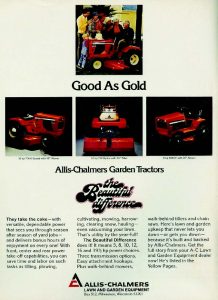
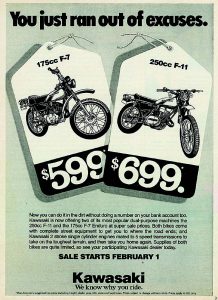
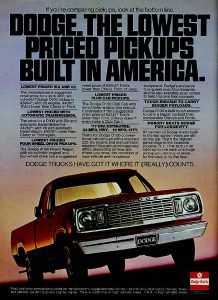
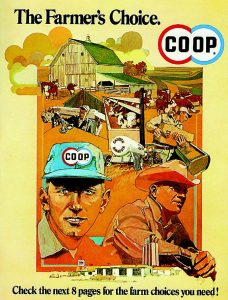
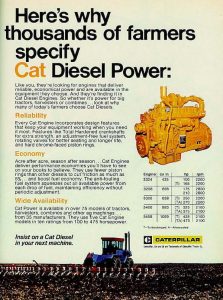
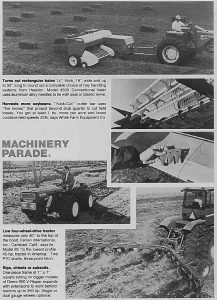
Photo 6 shows the first of eight pages in a huge ad for “double-circle CO-OP.” They took the time to showcase all of their products, including seed, fertilizer, chemicals, tires, lubricants, fuels, animal feeds and hardware items. They combined pictures and paintings to tell their story. This first page does a nice job of showing several different farm settings, all being supported by a CO-OP shown across the bottom of the page.
Even Caterpillar had an ad in this magazine as shown in Photo 7. Here they mention that their engines are available “…in over 75 models of tractors, harvesters, combines and other ag machines…” Below the engine pictured on the right side is a chart showing 10 different 3000 series engines ranging from 100 to 475 horsepower. There is an interesting picture across the bottom which features a “generic” tractor pulling a huge tillage tool. Caterpillar engines continue to be used in agricultural equipment to this day.
As with many other agricultural publications, Farm Journal had a section entitled “Machinery Parade®” in which they provided a quick glimpse of new products. Photo 8 shows the specific page from this issue. Across the top is a picture of the Hesston model 4500 baler, which made 14 inch by 18 inch by up to 50 inch long bales. Interestingly enough, it is hitched to an Allis-Chalmers tractor. The next two pictures below show the “Kwik-Cut” cutter bar introduced by White Farm Equipment to reduce field losses when combining soybeans. Next up is a small four-wheel drive tractor introduced by Ferrari International of Carlsbad, California. This was a low profile machine with two PTO shafts and a three-point hitch. The final item on the page was the new John Deere 900 v-ripper designed to be used with tractors of up to 350 horsepower.
Even Chevrolet cars were advertised in this magazine (Photo 9). In this case, it was the Chevrolet Caprice Classic Sedan and the pitch was the increased room inside the vehicle. Supposedly it had five more cubic feet of passenger space than the nearest competitor’s full-size car. Note the five numbers standing next to the car and the 6 foot, 4 inch model, who is also shown sitting inside in the smaller picture. Cars certainly have changed over the last 40-plus years.
The last advertisement from this issue that I would like to share with you is shown in Photo 10. This is the only one for a large agricultural equipment manufacturer found in the magazine and it is for Case. Here they are showing their 43 to 80 horsepower tractors and are advertising them as time “shavers.” Essentially Case was saying that these tractors could be used for any type of work, during any season of the year and they would actually help you reduce the time needed to complete different jobs. An asterisk after the horsepower ratings indicates that these tractors were actually manufactured by David Brown Tractors Ltd., which was an affiliate of J.I. Case. In the photographs, there is a model 1210 on the left and a 1410 and 885 in the photos on the right. I can’t identify the tractor with the loader and the text doesn’t tell us what it is either. The tag line, “doing something about it,” is one with which I am not familiar. I really don’t understand what “it” is, but apparently it worked for Case back in the day.
So, there you have some older advertising from the late 1970s. I was a junior in high school in March of 1977 and thumbing through this old magazine certainly brings back some memories of a very different period of time than today. In the next issue, we will get back to something directly
related to the smaller “toys.” Enjoy.
